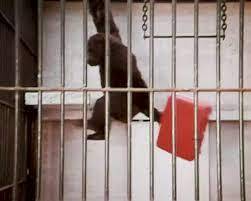“Gorilla in the room” is not actually the phrase that people use. It kind of conflates two terms that people do use, “800-pound gorilla” and “elephant in the room”. I’ll let you look those up on your own to establish their origins, but I’m sure the elephant was none too happy about having the gorilla steal his thunder.
Look at whatever it is you’re working on right now. You have a podcast. Or you run the family business. The morning show at your radio station has your name on it. Are you giving ground to that same gorilla when you could be more effectively owning your niche?
A package arrived at a client’s office not long ago while I was there for a meeting. We laughed about how beaten up it was, and I said, “It looks like it was in that old Samsonite TV commercial from the 1970s!” Everyone in the room connected with the reference, and we all laughed some more.
And either no one knew to correct me, or no one chose to.
Have a look at the commercial itself to see what I’m talking about:
Did you catch what I did wrong? The gorilla in the room applies here because it’s not a Samsonite commercial at all. The luggage in the commercial is made by American Tourister. Students enrolled in my copywriting course have seen me hold this up as one of the most memorable TV commercials of the 1970s. However, you could make the argument that it’s a terrible commercial. Why? Because people thought it was for Samsonite. Maybe that partially explains why Samsonite ended up acquiring Tourister in an early 90s merger.
The point is that American Tourister sank money into a great commercial, and plenty of people didn’t give them credit. I was in a whole room full of people who gave credit to the gorilla in the room, instead of the elephant.
What’s Your Favorite Position?
Does your project own a particular position? Or are you just another member of a crowded field?
In an earlier piece, we talked about the art of positioning, and how it can make or break a brand. You will lose to the gorilla almost every time unless you’ve done a good job carving out your niche. I’m going to recommend two books that I’d suggest you read back-to-back to get the full impact of what I mean. The first is Positioning: The Battle For Your Mind, which came out in 1981. The second is Marketing Warfare. Both are written by the team of marketing legends Al Ries and Jack Trout. When you combine what you learn from the two books, the picture looks clear. If you’ve done an effective job establishing a position for your project, you own a piece of territory in the psyche of the consumer. We call that “top-of-mind awareness.”
Lots of easy examples come to mind. Facial tissues? Kleenex. Search engine? Google. Courier service? FedEx. My friends Dave Jackson and Jim Collison got it exactly right. They are one of about a hundred and fifty thousand podcasts about podcasting. But they are the ones where you can Ask The Podcast Coach. If you want a cable news channel, you have two choices, depending on whether or not you’re a raving lunatic: CNN, or Fox News. Yes, there are almost as many news networks as podcasts about podcasting, but those are the two to beat. They are the gorilla in the room because when somebody says they saw something “on the news”, most of us will assume it was one of those two outlets.
Who is the gorilla in the room for your project?
If you do something great, do you get the credit? Or does the average consumer automatically assume it was one of your competitors? Before you sink time, effort and money into your next big thing, make sure there’s no gorilla in the room you’re not watching out for. Otherwise, they’ll get all the benefit while you’re left holding the bag.






